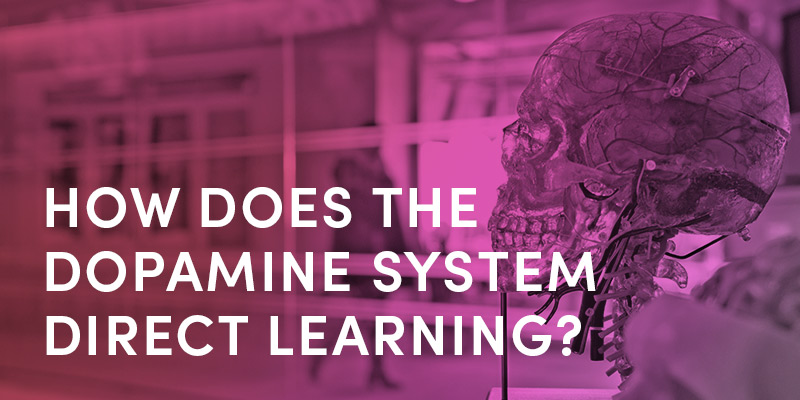
How To Improve A Sales Team’s Performance With Self-Directed Learning
Wednesday March 15th, 2017A learning environment built on trust, where individuals are free to adopt their own learning styles, creates a memorable and enjoyable educational experience. But how do leaders create such an environment for their team?
Much like the classic example of trying to teach a fish how to climb a tree, many educational programs judge all participants on their ability to learn specific skills in a predetermined format. Luckily, we have access to the internet and the ability to seek out the information needed to overcome the unique challenges we face.
This process is known as self-directed learning. In essence, an individual takes initiative to manage their own learning activities and is motivated to do so by an inherent desire to improve. That desire is what makes this approach to learning so empowering.
I am interested in the benefits of self-directed learning in sales training and how our brain’s dopamine system helps form that relationship. By understanding the dopamine systems’ role in self-directed learning, sales team’s can be motivated by learning the skills they need to improve performance.
Before we jump into the relationship between the dopamine system and self-directed learning we must first understand the underlying concept.

In 1975 Malcom Knowles published Self-Directed Learning, a guide for learners and teachers practicing andragogy, or according to Knowles, “the art and science of adult learning.” He defines self-directed learning as “a process in which individuals take the initiative without the help of others in diagnosing their learning needs, formulating goals, identifying human and material resources, and evaluating learning outcomes.”
So who wants a sales team that takes initiative to find out what they need to learn, sets goals for themselves, finds the resources they need to accomplish those goals and evaluates their own performance? I do!
Now that we understand what self-directed learning is, we can explore how the dopamine system guides self-directed learning behavior.

A study done at the University of Colorado by Seth Herd, Brian Mingus and Randall O’reilly proposes that there is a correlation between dopamine release and attentive learning. They state that “success at any physical or mental task acts as a reward, and known dopamine system mechanisms should then produce self-directed learning behavior.”
Essentially, if a task where “success is possible, but not certain” is accomplished, our brain’s dopamine system triggers release signals. The release of dopamine helps lock the learner’s attention to the task at hand and directs the learner to the next task where there is potential for rapid learning.
As the learner continues down their own unique path to accomplishing the objective, the system continues to signal the release of dopamine. Your brain is actually receiving an award in the form of a dopamine release each time a challenging task is accomplished.
These rewards begin to motivate the learner and give them more confidence in their own ability to acquire the skills needed to accomplish the objective. The newly motivated learner is now not only improving individual performance but also enjoying the process of doing so.
If you have ever tried to learn a musical instrument, you have experienced this phenomenon. First you establish an objective, maybe mastering the instrument or just getting good enough to impress your crush. Next comes your first task and you begin learning basic music theory and playing the melody of songs like twinkle twinkle little star.
Once you gain the ability to string that melody together you yearn to play more difficult pieces, maybe your favorite song at the time. Regardless of what is learned next, the feeling you get when you advance your skill level is enticing and each time you improve the more motivated you are to invest time into the learning process. This is your dopamine system producing self-directed learning behavior.
Since this is an individualized approach to learning, you might be asking yourself how can it be applied across an entire team? This a great question, so let’s dig into it.

There are two goals for a team self-directed learning project; improving individual performance of each participant and achieving the organizational objectives.
The team leader’s #1 responsibility is ensuring the team understands the organization’s goals.
A sales team should be left to their own devices to accomplish the objectives of the project while the sales team leader acts as more of a mentor than a teacher. This allows each individual team member to learn new skills and apply them to their sales approach in their own way. As the acquired skills improve individual performance, the overall sales performance of the organization improves.

I suggest using these 5 steps when implementing this type of sales training.
- Clearly define and communicate your organization’s objectives and goals to your sales team.
- Create incentives to motivate employees to participate in a self-directed learning project.
- Help the team break the objective down into smaller tasks where potential for successful learning is high.
- Offer your knowledge as a resource to your team while they seek out the information they need to accomplish their tasks.
- Allow sufficient time for the team to accomplish the objectives and measure results against performance before the self-directed learning project started.
Remember, in an individualized approach to learning it is up to your team to decide which skills they need to learn. So once the objective is communicated let the dopamine do the work!
What’s The Team’s Role?
Finally, the salesperson’s role is to identify and learn the necessary skills to improve individual performance with whatever mechanisms are best suited for their learning style. That is all. Now go out and learn a new skill, apply it to your sales approach and enjoy selling!